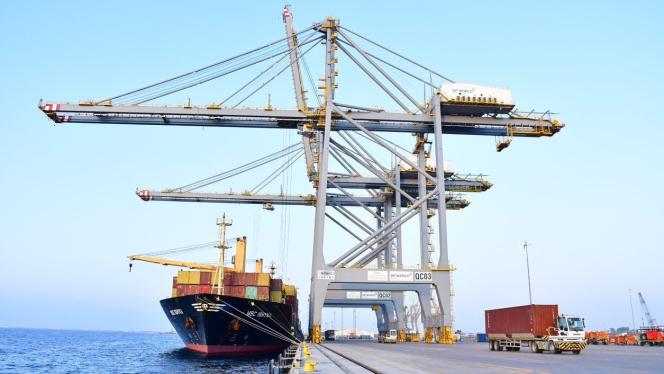Thursday 21 November 2024
Beyond the MoU: political order, infrastructure and sovereignty in the Horn

The memorandum signed between Somaliland and Ethiopia exemplifies the close interlinkage between infrastructural projects and political visions in the Horn. But its signing marks a departure from a vision of infrastructure as a basis for cooperation.
2024 started with a bang in the Horn of Africa as Ethiopian Prime Minister Abiy Ahmed and Somaliland President Musa Bihi Abdi signed a Memorandum of Understanding (MoU). While the exact text of the agreement remains undisclosed, cabinet members in Addis and Hargeisa reported that landlocked Ethiopia would be granted the right to a naval base on the Gulf of Aden and that its use of port facilities at Berbera would be further facilitated while the Somaliland government could secure a minority stake in Ethiopian Airlines. Most explosively, the MoU allegedly includes a clause that Somaliland would receive recognition as a sovereign state. Somalia’s federal government responded furiously, denouncing the “null and void” deal as unacceptable meddling in internal affairs and ratifying a defence pact with Egypt to counter the initiative. Indeed, the MoU raised concerns across the Horn, with officials in Djibouti, Eritrea, Kenya and Sudan worrying the agreement further destabilised an already fracturing region and arguing that Ethiopia could not unilaterally redraw regional borders.
While the region has long been known for hyperbolic political discourse, the controversy around the MoU should not be dismissed as business-as-usual rhetoric. Rather, both the proposed deal itself and the opposition it has generated reflect the deep-seated inter-linkages between infrastructure and state-formation in the Horn of Africa. Our scholarly work argues that infrastructures have been central to the consolidation of political orders in the region. In doing so specific dams, pipelines and railways have sought to disable infrastructural alternatives because these rival infrastructural visions embody competing claims of sovereignty.
Indeed, the entwining of infrastructure and sovereignty in the Horn must be understood in relation to two key characteristics of the region: its daunting geography and its history of statehood and borders that have been contested from within and from without. On the one hand, the Horn is a composite of scorching saline lakes, immense drylands, rugged escarpments and shape-shifting wetlands, often rapidly transitioning into each other. These topographies have long posed logistical dilemmas for state officials seeking to extract resources and project authority over heterogeneous peoples and vast distances. On the other hand, the region continues to wrestle with the legacies of European, Egyptian-Turkish and Abyssinian imperialisms during the 19th and 20th century and the ways in which post-independence states have recurrently disappointed and failed to deliver the security, prosperity and dignity their diverse citizens expected. The results have been continuous attempts to redraw the map of the region, both by domestic insurgents and by insecure governments who have believed that reworked or new states would solve their intractable problems.
From the standpoint of prospective state-builders, big infrastructures have held out the prospect of dealing with the formidable challenges imposed by geography, history and unsettled political orders and to strengthen vulnerable sovereignties. First, infrastructures are useful for governments to control distant and contested border regions of their territory: they enhance the state’s presence in the peripheries and borderlands where it has historically been most contested or altogether absent. A poignant example is Ethiopia’s post-2008 construction of dams, roads and resettlement villages in the remote South Omo Valley. In this region adjacent to Kenya and South Sudan, where cattle-raiding and inter-communal violence have been rife, infrastructure promises to ‘finally’ incorporate into the Ethiopian state proper.
Moreover, infrastructures have strengthened the politicians, administrators and businessmen at the core of the state. Erecting railways, bridges and canals has reinforced the budgets, confidence, and mandates of national bureaucracies which, as chief implementers of state-building designs, have frequently instrumentalised infrastructure to exert exceptional legal, financial and even military authority and to deny it to those resisting them. Sudan’s Dam Implementation Unit (DIU), for instance, operated outside normal budgetary, administrative, and legislative procedures while constructing hydro-infrastructure between 2003 and 2015 on the Nile and its tributaries. Controlling a multibillion-dollar budget, the DIU not only built dams but focused on airports, archaeological heritage, agricultural schemes, medical facilities, and resettlement. The DIU also commanded its own security service and could expropriate and detain citizens. Such power grabs are enabled by the fact that many projects are articulated as part of nationalist narratives from the centre of power. Aspiring state-builders have portrayed the gargantuan costs of mega-infrastructures as collective sacrifices through which a new national identity can be born. Think of how Egypt’s High Aswan Dam on the Nile became an invaluable feature in Gamal Abdel Nasser’s nationalist propaganda. Such framing of infrastructures often makes it harder to oppose them.
Finally, big infrastructures allow states to shore up external dimensions of their sovereignty. They can physically establish a military presence in a remote periphery and mark control over a contested border or resource, but also mould treaties, political agreements or trade-arrangements that recognize the sovereignty of the host. Infrastructure can grease extra-regional alliances as foreign partners acquire financial stakes in projects and the host’s resources become embedded in global capitalist circuits. Djibouti’s development as the region’s wealthiest per capita country and the safeguarding of its independence throughout the decades – against a backdrop of Somali and Ethiopian designs to incorporate it – is a function of the port-state’s nifty diplomacy and strategic use of its Red Sea real-estate. Container terminals, foreign military bases, and the railway to Dire Dawa and Addis Ababa are integral to Djibouti's autonomy, safeguarding the country’s leadership from coercion by regional and extra regional powers.
Often though, various bridges, canals and ports fail to achieve the objectives for which they’re actually built. Infrastructures in the Horn have often suffered from failed construction, lack of maintenance and/or attacks, and questionable economics and environmental rationales that erode their impact and increase their costs. Cases in point include Sudan’s scrapped Kajbar Dam, decades of failing to build the Jonglei Canal along the White Nile, and the East African Crude Oil Pipeline, first tabled in 2013, redesigned multiple times but still in the works. Moreover, the political currency of infrastructures sometimes fades over time, in the process also weakening the very sovereignty they were initially meant to buttress.
Keeping the “roads not taken” in mind helps recast the politics of the Ethiopia-Somaliland MoU and other infrastructure gambits in the Horn. Today’s controversy over Somali(land) sovereignty and over Ethiopia’s access to the sea as it seeks to create jobs for its growing population must be understood considering the failed push for regional integration through dams, pipelines and roads of a decade or two ago. Under the impulse of prime minister Meles Zenawi, Ethiopia proposed deep integration around water, energy and possibly food through dam-building on the Blue Nile to end decades of mutual destabilisation.
Meles’s propositions recast infrastructure in the Horn: if rivalling regional powers had historically jealously guarded their sovereignty through ports and pipelines, infrastructures could in the 21st century be envisaged as creating interdependencies that could strengthen states, mitigate regional insecurity and reduce poverty. To help put to rest a long history of hostility between these states, Sudanese and South Sudanese oil could reduce Ethiopia’s fuel import dependency while the Grand Ethiopian Renaissance Dam and other hydro-infrastructures would offer Sudan, South Sudan and Kenya cheap electricity and expand Sudanese agricultural production through irrigation. Importantly, the intention was not simply a series of bilateral arrangements but a dense regional web of infrastructures to usher in a new politics. Meles therefore also joined forces with Kenyan president Mwai Kibaki to table the Lamu Port–South Sudan–Ethiopia Transport (LAPSSET) corridor which through roads, ports, and pipelines could stimulate industrialization and development in some of the region’s most marginalised hinterlands.
Previous hopes that trading water/hydropower for fuel might underpin a different approach to borders and (in)security faded amidst renewed regional polarisation after 2013. Fifteen years ago, cooperation in the Horn had geopolitical winds in its sails. Today the appetite for anchoring a different conceptualization of sovereignty through infrastructure has largely dissipated. The Ethiopia-Somaliland MoU polemic marks a return to more conventional infrastructure politics in which domestic and international insecurities lead elites to assert their own sovereignty through ports and bases that reignite old rivalries and encourage others to play the same power game. However, it is important to underscore that such stratagems have failed to decisively eliminate alternative visions of infrastructural futures which continue to linger and draw fuel from the vulnerability of extant political orders. Forgone infrastructures such as canals, dams or railways often return to inspire new generations to reconfigure spatial patterns. They can spark different imaginations of regional order beyond the prism of competing states: what the Horn of Africa is, what it could have been and what it can still become.






